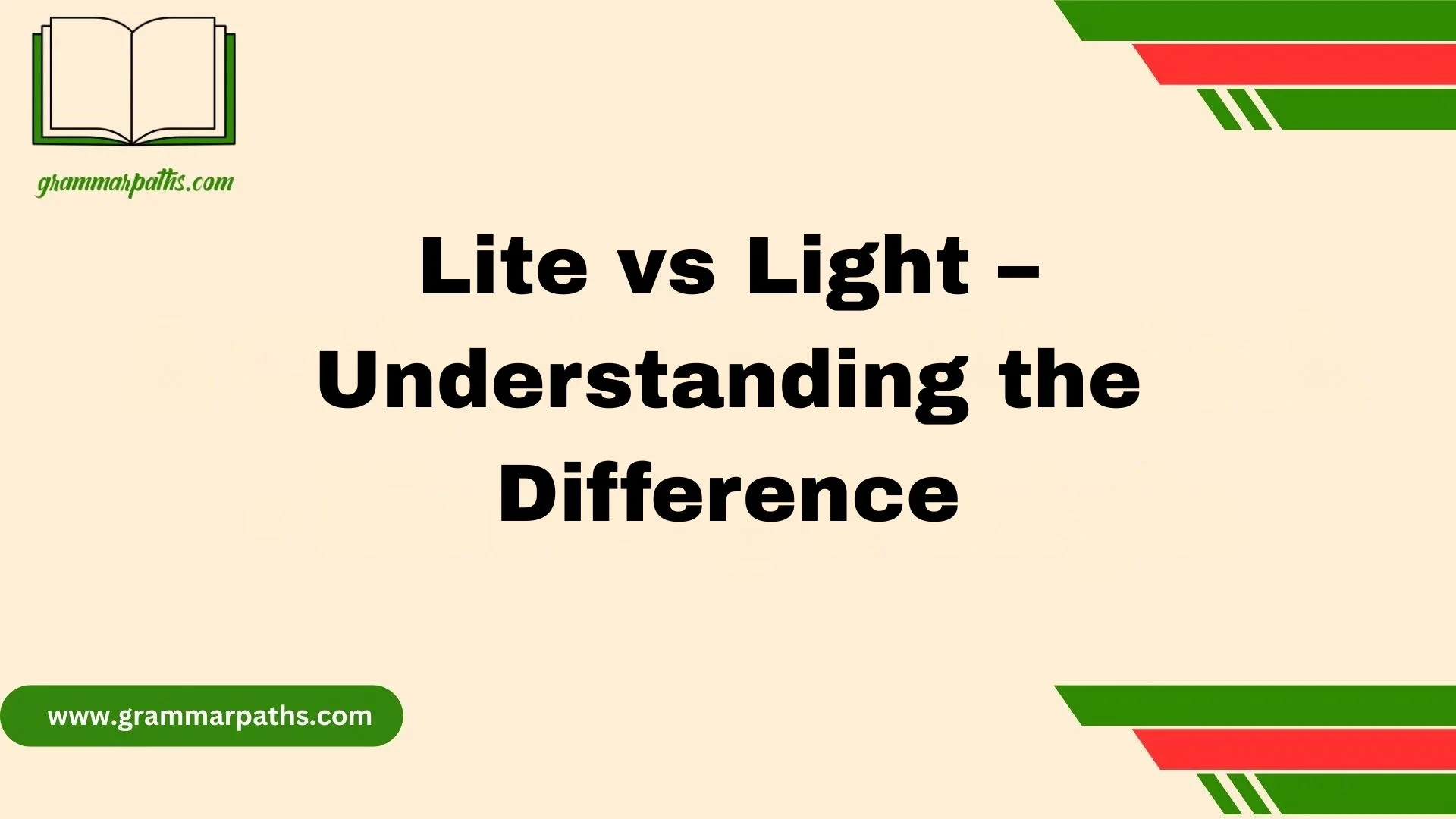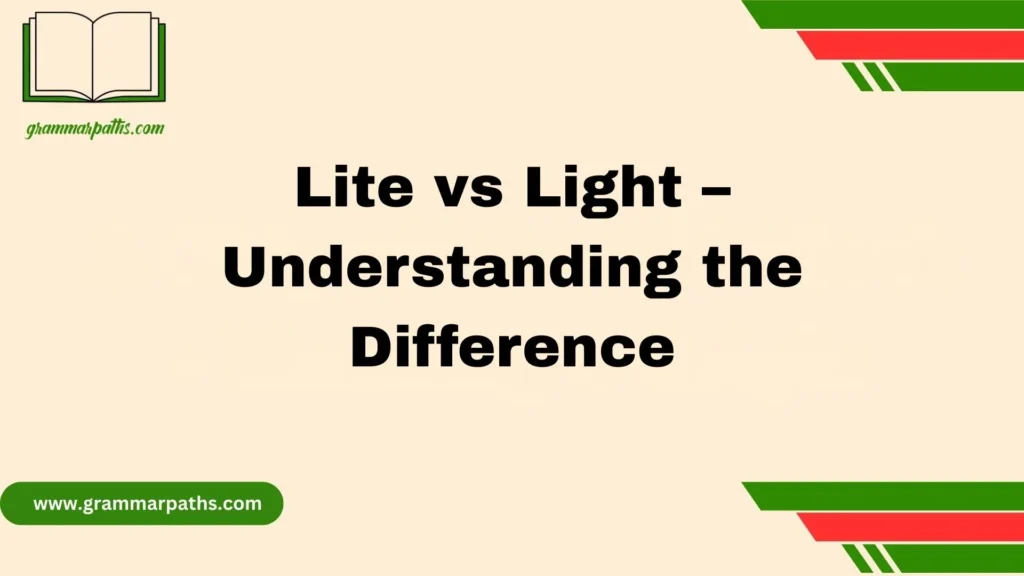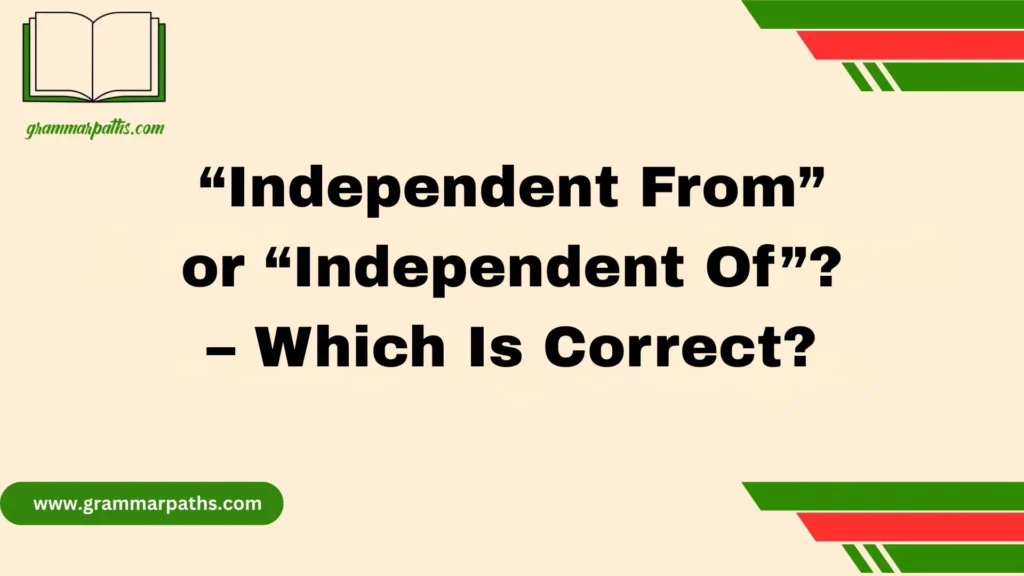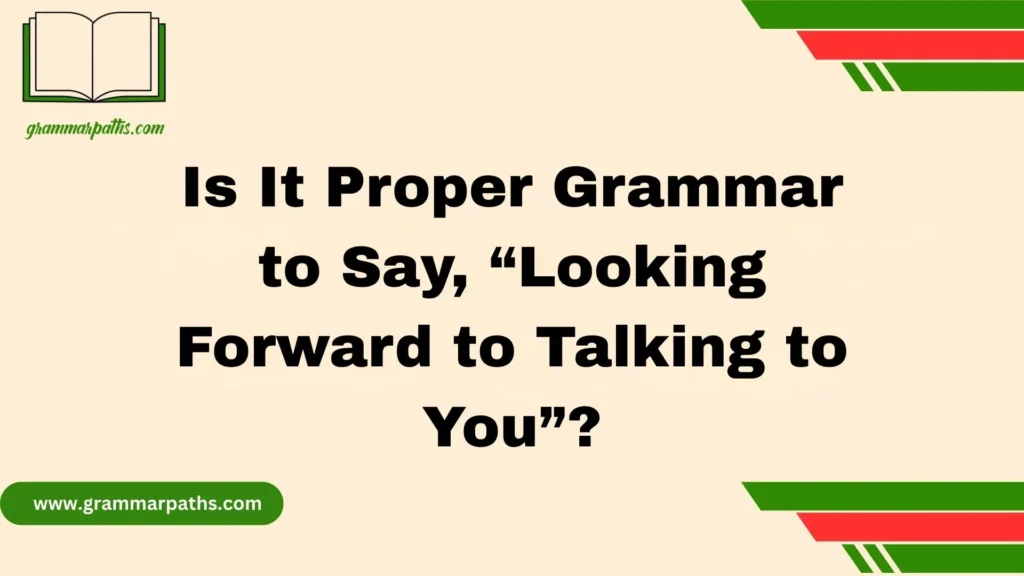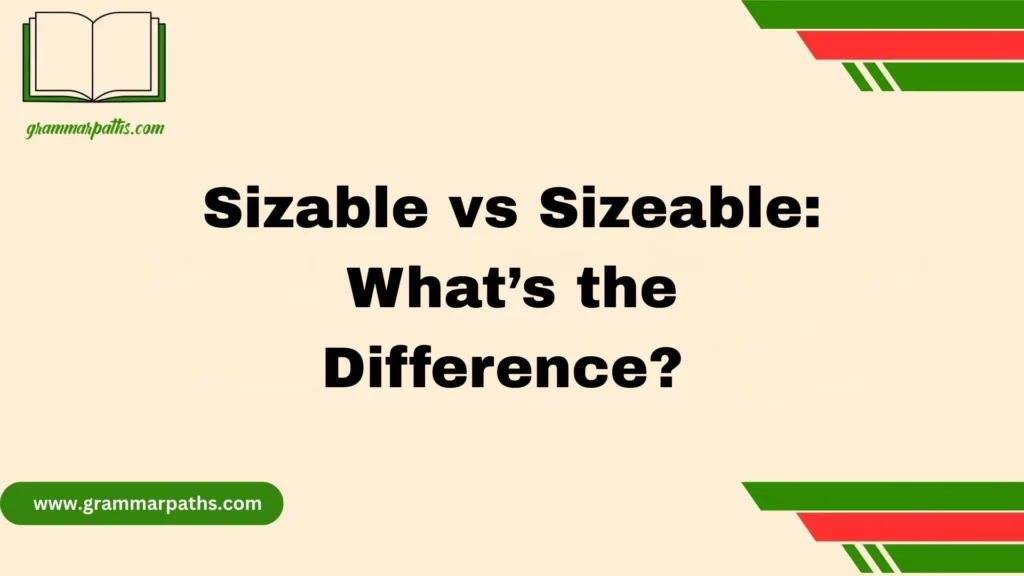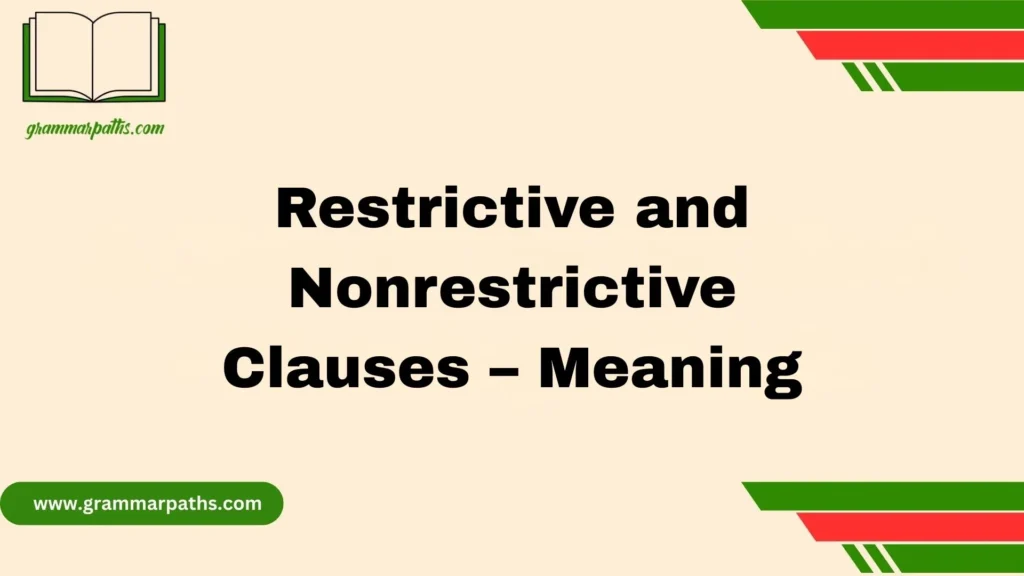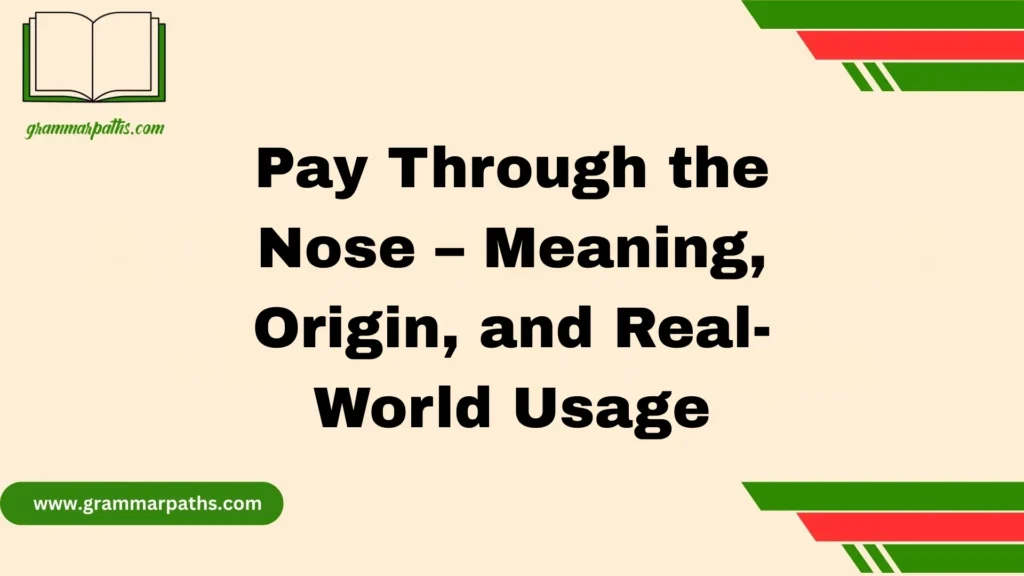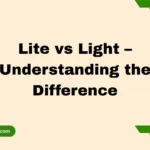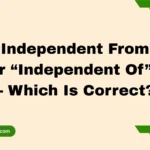When I first started learning English, I often got confused by words that sound the same but have different spellings and meanings; Lite vs Light – Understanding the Difference is all about this, covering classic examples like lite and light used in illumination, marketing, and non-heavy items such as a feather, sun, or candle.
Navigating these nuances takes practice and careful learning. Language learners should understand vocabulary, usage, and how to express ideas accurately in both spoken and written forms. You might talk about a lite beer or light salad dressing, so being careful with your terms, grammar, syntax, and formal versus informal contexts is important, especially when substituting one variant for another.
From experience, choosing between lite and light becomes easier when you know the purpose of the word in sentences. Lite is a modern, commercial version, often marked on packaging to show sugar-free, low-calorie, or alternative ingredients, while light is still widely used in literature, publications, and daily communication, describing brightness, weight, or other qualities. By comparing examples like Miller Lite, Bud Light, or Dannon Light ‘n Fit Yogurt, you can confidently avoid confusion and make your writing and speaking clear, fun, and accurate.
Understanding the Core Difference Between “Lite” and “Light”
Before diving into history or branding, let’s start with the basics.
“Light” is the original English word. It has multiple meanings, including:
- Brightness: as in “the light of the sun”
- Weight: as in “a light suitcase”
- Color or intensity: like “light blue” or “light rain”
- Reduced strength: as in “light beer” or “light cigarette”
“Lite”, on the other hand, is a modern, simplified spelling used mainly in marketing, branding, and informal contexts. It often implies:
- Fewer calories, fat, or sugar
- Simplified or reduced versions of products
- A casual, modern, or youthful vibe
Here’s a quick side-by-side comparison:
| Feature | Lite | Light |
| Meaning | Informal spelling; often refers to low-calorie or simplified products | Standard English word with many meanings |
| Tone | Casual, modern, catchy | Neutral, formal, traditional |
| Common Usage | Branding, product names, advertising | Everyday language, formal writing |
| Examples | Miller Lite, Lite yogurt | Light beer, light jacket |
| Formality | Informal | Appropriate in all contexts |
In short: “Lite” is for marketing, “light” is for everything else.
Etymology and Evolution: How the Two Spellings Came to Be
The story of “lite” vs. “light” starts centuries ago.
The Origins of “Light”
The word “light” comes from Old English, specifically lēoht (meaning brightness) and līht (meaning not heavy). Over time, both forms merged into the single spelling we know today.
In medieval English, spelling was far less standardized than it is now. But by the 18th century, “light” had become the accepted form across dictionaries and formal writing.
The Birth of “Lite”
“Lite” didn’t appear until much later—mid-20th century America—when advertisers began simplifying spellings to sound fresh and modern.
It wasn’t created out of laziness, but out of branding psychology. The new spelling looked friendlier, easier to remember, and visually lighter—perfect for products promising fewer calories or a simpler experience.
Early Uses of “Lite”
Some of the earliest and most influential uses of “lite” include:
- Lite-Brite (1967): The children’s toy that used light pegs.
- Miller Lite (1975): The beer that made “lite” synonymous with “low-calorie.”
- Litehouse Foods (1963): Makers of light salad dressings and dips.
These examples helped cement “lite” as a marketing tool. Since then, it’s become a shorthand for “healthier” or “reduced” versions of products, even when the difference is minimal.
Usage in Modern American English
In American English, “lite” has become an accepted informal variant—especially in consumer culture. You’ll find it everywhere:
- Food and beverages: Lite yogurt, Lite cheese, Miller Lite beer
- Technology: Lite apps (like Facebook Lite or YouTube Lite)
- Media and entertainment: Lite FM radio, Lite versions of games
Why It Works in the U.S.
American English often embraces simplified spellings (color vs. colour, flavor vs. flavour). “Lite” fits that pattern—it’s short, punchy, and looks more approachable on packaging.
Generational Influence:
Younger audiences perceive “lite” as trendy and digital, while older generations might see it as informal or gimmicky.
Regional Use:
“Lite” is primarily American, while British English rarely accepts or uses it outside brand names.
“Lite” in Marketing and Branding
No discussion about this topic is complete without talking about advertising. “Lite” isn’t just a word—it’s a strategy.
Why Marketers Love “Lite”
- Visual Appeal: Shorter words look better on packaging.
- Psychological Impact: Suggests simplicity, speed, or health benefits.
- Trademark Flexibility: “Lite” allows brands to stand out legally, since “light” is too generic.
- Modern Identity: Conveys innovation and youthfulness.
Case Studies
Miller Lite – The Original Trendsetter
In 1975, Miller Brewing Company launched Miller Lite, one of America’s first low-calorie beers. The campaign tagline “Great Taste, Less Filling” became legendary.
Why It Worked:
- “Lite” looked modern and sporty.
- The spelling differentiated it from “light beers” already on the market.
- It emphasized branding over grammar.
Today, Miller Lite remains one of the top-selling light beers in the U.S., showing just how powerful a single spelling choice can be.
Litehouse Foods
This American food brand uses “Lite” for reduced-calorie versions of its dressings. For example, “Lite Ranch Dressing” indicates fewer calories and less fat—perfect for health-conscious consumers.
Tech Industry Usage
“Lite” isn’t just for food anymore. Apps like Facebook Lite and Spotify Lite use it to mean a lightweight or stripped-down version—faster, smaller, and optimized for minimal data use.
“Light” on Labels and in Everyday Contexts
While “lite” may dominate in branding, “light” remains the official term in regulatory and linguistic contexts.
Meaning of “Light” on Product Labels
According to the U.S. Food and Drug Administration (FDA), a product labeled “light” must meet specific conditions. For instance:
- Calories: ⅓ fewer calories than the regular version.
- Fat: 50% less fat than the reference food.
- Sodium or Sugar: Reduced by at least 25%.
So while Miller Lite uses “lite” as branding, a product labeled “light yogurt” must actually meet FDA standards.
Why “Lite” Doesn’t Count
“Lite” has no official definition under U.S. law. That means when you see “lite” on a package, it’s a marketing choice, not a regulatory one.
Examples in Context
- “Light mayo” (officially reduced-fat)
- “Lite mayo” (marketing term, may or may not meet standards)
- “Light brown sugar” (describes color, not calories)
- “Light rain” (weather intensity)
Pro tip: Always read nutrition labels—“lite” doesn’t always mean healthier.
Writing and Grammar: Which One Should You Use?
If you’re writing an email, report, or academic paper, “light” is almost always the correct choice.
When to Use “Light”
- Formal writing: business reports, academic essays, news articles
- Everyday descriptions: “light traffic,” “light workload,” “light meal”
- Scientific or regulatory writing: always stick with “light”
When “Lite” Works
- Brand names and marketing: “Lite soda,” “Lite app,” “Lite meal plan”
- Creative writing or digital contexts: to mimic a brand voice
- Casual speech: texting, social media, advertising copy
Tone Difference
“Lite” conveys informality, playfulness, or modern branding flair.
“Light” sounds neutral, reliable, and grammatically correct.
Here’s a handy cheat sheet:
| Context | Use “Light” | Use “Lite” |
| Formal writing | ✅ | ❌ |
| Marketing/branding | ❌ | ✅ |
| Scientific or legal documents | ✅ | ❌ |
| App or product naming | ❌ | ✅ |
| Everyday conversation | ✅ | Sometimes acceptable |
Common Mistakes and How to Avoid Them
Even native speakers trip over this pair. Here are common errors and how to steer clear:
Mistake #1: Using “Lite” in Formal Writing
❌ “Our company is launching a lite version of the report.”
✅ “Our company is launching a light version of the report.”
Unless it’s part of a product name, stick with “light.”
Mistake #2: Assuming “Lite” Always Means Fewer Calories
Some “lite” products aren’t healthier—they just sound that way. Always check the label.
Mistake #3: Mixing “Lite” and “Light” in the Same Context
Using both forms interchangeably confuses readers. Choose one and stay consistent.
Mistake #4: Thinking “Lite” Is British
“Lite” is American, not British. U.K. brands typically use “light.”
Fun Linguistic Insights and Cultural Trivia
The world of “lite” and “light” gets surprisingly fun when you look at culture and idioms.
Idioms That Use “Light”
- “See the light” – to understand or realize something
- “Make light of” – to treat something as unimportant
- “In the limelight” – to be the center of attention
- “Light at the end of the tunnel” – hope after a hard time
You’ll never find these idioms written as “lite.”
Pop Culture Uses
- “Lite FM” – a radio format focusing on soft, easy-listening music.
- “Lite-Brite” – the 1960s toy using small colored pegs that lit up.
- “Lite apps” – minimal versions of mobile apps for low-data usage.
These uses show how “lite” became part of American culture—not just language.
Quick Comparison Table: “Lite” vs. “Light” at a Glance
| Aspect | Lite | Light |
| Origin | 20th-century American marketing | Old English (lēoht, līht) |
| Meaning | Simplified, reduced, casual | Standard form; weight, brightness, etc. |
| Tone | Informal, modern | Formal, standard |
| Common Fields | Marketing, technology | Writing, science, general speech |
| Legality (FDA) | Not regulated | Strictly defined |
| Example Phrases | “Miller Lite,” “Facebook Lite” | “Light beer,” “light blue,” “light work” |
Conclusion
Understanding Lite vs Light – Understanding the Difference helps you use these words confidently in both writing and speech. Light works for illumination or non-heavy objects, while lite is mostly used in commercial products like Miller Lite, Kikkoman Lite Soy Sauce, or Dannon Light ‘n Fit Yogurt. Being aware of the context, nuances, and purpose of each word ensures your communication is clear, accurate, and fun, whether in formal writing, casual conversation, or marketing content.
FAQs
Q1: Can I use “lite” instead of “light” in formal writing?
No. Lite is best for informal or marketing contexts, while light should be used in formal writing or when describing weight or illumination.
Q2: Are “lite” and “light” pronounced the same?
Yes, they are homophones, meaning they sound the same but have different spellings and meanings.
Q3: Does “lite” always mean low calories?
Mostly, yes. Lite is used to indicate fewer calories, less fat, or a lighter version of a product, but the exact meaning can vary depending on branding or packaging.
Q4: How can I know which one to use?
Focus on context: use light for physical weight or illumination, and lite for commercial products or informal contexts. Comparing examples helps reinforce the difference.
References and Further Reading
- Merriam-Webster Dictionary – “Lite” Definition
- Oxford English Dictionary – “Light” Etymology
- U.S. FDA Food Labeling Guide
- Grammarly – Commonly Confused Words: Lite vs. Light

Mia Rose is the passionate writer and founder of GrammarPaths.com, a resource dedicated to helping learners master English grammar, idioms, and writing skills with ease. With a deep love for language and years of experience in teaching and content creation, Mia simplifies complex grammar rules into clear, practical guides that readers can instantly apply.
